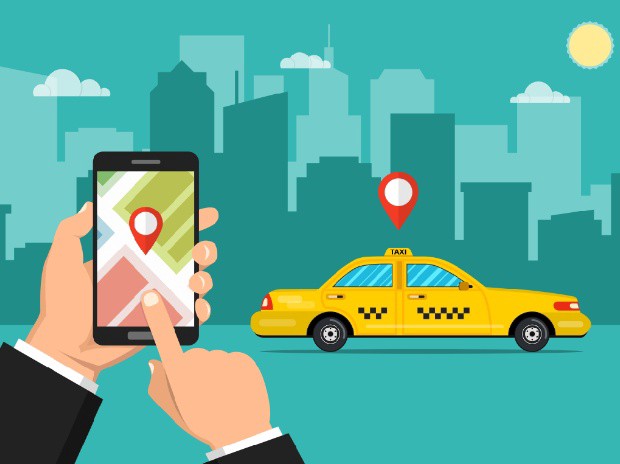Launched in 2009, Uber soon outgrew its home in San Francisco, USA. Within a span of 9 years, Uber spread to over 600 cities all over the globe, becoming a rage due to its affordability and convenience. The ultimate proof of its ubiquity: ‘calling an uber’ is the new ‘hailing a cab’. Despite its burgeoning popularity and consumer base, it can’t seem to catch a break with regulations, triggering strong responses from governments across the world.
Countries like Hungary, Bulgaria and Denmark have imposed a full ban on Uber, while London had imposed a temporary ban which was lifted recently. This backlash arises out of its disruptive business model which is way ahead of existing vehicular regulations in any part of the world. For instance, it claims to be an internet company and not a transport provider and considers its drivers as freelance contractors and not employees. Due to this model though, it’s own capital costs on the surface are minimal since it doesn’t own the cars that operate on its platform, neither does it employ the people who drive those cars. Yet Uber is bleeding billions of dollars. Uber, being a private company, is not obliged to disclose its financial results, hence it is difficult to estimate its losses. But if reports are to be believed, it has burned over $10.7 billion of investors’ money in 9 years. How then has Uber managed to become one of the biggest venture-backed technology companies in the world today? The answer lies in its size and growth.
In less than a decade Uber has spread to over 30 countries and it shows no signs of stopping. Under the leadership of its new CEO, Dara Khosrowshahi, Uber’s position is improving as the tech giant narrowed its losses by 49% and increased its revenue by 55% in the first financial quarter of 2018. But these shrinking margins come at what cost?
Uber, which is a two-sided market for its drivers and riders, is facing pressure from both ends of the spectrum. Earlier, Uber provided great incentives to its drivers while also heavily subsidising rides for its users thanks to its generous investors. Uber was prepared, and very willing, to bear such losses to ensure mushrooming of its services globally. But lately, in an attempt to curb losses, Uber has cut back immensely on the incentives provided to its drivers and also increased its percentage share on all rides from the driver’s share of the money. It has faced tremendous backlash from the drivers for the same, especially in India.
Why are Uber’s problems in India unique?
Uber was conceptualized on a peer-to-peer(P2P) sharing economy model wherein individuals can borrow or rent assets owned by someone else, while asset owners can monetize their underutilized assets. Thus, Uber drivers were envisioned to work part-time, driving their private cars.
Uber in India functions differently than Uber abroad as many drivers buy new cars on loans to join Uber as full-time service providers. Moreover, in India, private vehicles can not operate on Uber’s online platform unless they secure a commercial license, costing anywhere between Rs. 4,000 to Rs. 24,000, governed by the Motor Vehicles Act 1988 at the centre in addition to state specific requirements and permissions. Since many of drivers buy cars on loan or lease cars with the goal of operating it on the Uber platform, the concept of sharing economy gets blurred in the Indian market as car-ownership patterns are very different in India, where vehicle population as of 2015 was only 210 million, out of which only about 30 million owned 4-wheelers. This makes Uber in India a capital-intensive affair, since a major chunk of a driver’s monthly earnings go into installments on their loaned or leased cars.
Keeping this in mind, reducing incentives and payments for drivers puts tremendous burden on these drivers since most of them bought new cars in order to drive with Uber, with an assurance of making anywhere between Rs. 1 lac to 1.5 lac per month. This has resulted in agitations by Uber drivers all over the country who are burdened with debt. For these drivers quitting Uber is not as simple as merely logging out of the app. From the other end of its two-sided market, Uber faces pressure of keeping the prices of its services competitive to stay at par with its competitors like Ola in India and Lyft in USA.
Despite heavy losses, Uber is unwilling to compromise on its investments in India, which is one of its largest markets outside of the USA, and feels that there is still tremendous potential to be unlocked in the country. To counter some of these concerns and tap into the untapped market Uber has introduced additional features, many of which are uniquely designed for India, such as the new Uber Lite app or the Cash payment feature, which was eventually extended to other countries.
Uber aims for long-term expansion to establish dominance in the ride-hailing industry globally, following an expansion model like the one Amazon followed in the retail business. During Amazon’s nascent phases the company shouldered heavy losses and hit profitability only after a company’s Initial Public Offering(IPO), that is, its stock market launch. Even today, a very small margin of Amazons profits come from its retail unit, and a major chunk of it comes from its cloud computing business, Amazon Web Services(AWS). On similar lines, Uber has been investing in many parallel industries like self-driving cars and UberEats in order to expand its reach and revenue.
What can Uber change in its existing operations?
Being a market for both drivers and riders, Uber needs to pay heed to its ‘driver partners’.A dearth of drivers may increase costs for riders, who may switch to a competing ride-hailing service. Taking a cue from its rival in US, Lyft, Uber too can work towards building stronger relations with its drivers.
Lyft offers a weekly and hourly income guarantee to its drivers in some cities as long as they satisfy necessary requirements. Lyft’s Accelerate rewards programme gives added rewards to its drivers based on the number of rides completed in a month, providing cell phone discounts at the program’s Silver level, and offering free roadside assistance at the Platinum level.
Whether Uber can pull an Amazon or not, only time will tell, but Uber most definitely is a force to be reckoned with. Uber has a unique model, and a risky one at that, way ahead of existing global regulations. Yet it seems to have its priorities in place in terms of giving growth and expansion more weightage than profitability; it is this careful balancing act which will determine its future.
Post Disclaimer
The opinions expressed in this essay are those of the authors. They do not purport to reflect the opinions or views of CCS.






